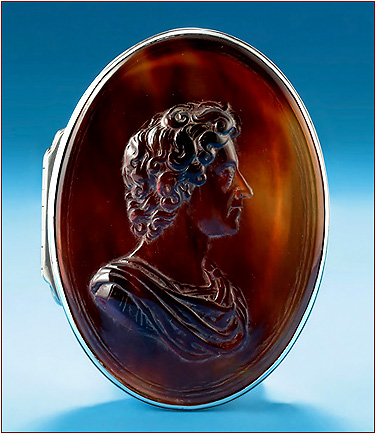|
Today, the tortoise and even some
cowries are listed as 'endangered' or 'vulnerable' species.
Both have been collected as food, and harvested for the beauty of their shells.
However prior to the 20th century, these marine animals were still plentiful in the wild
-
as well as
'found
fragments
& remnants'
on beaches worldwide.
From these remnants, 17th, 18th and early 19th century artisans
created some of the most collectible small works of art we have today.
These include the coveted tortoiseshell and
cowrie shell snuff boxes,
expertly mounted with silver, the tortoise often moulded and carved,
some also engraved with family coats of arms.
For snuff boxes, tortoiseshell was the unparalleled material of
choice!
It could not only be heated, moulded and carved,
it could be impressed, inlaid,
polished, as well as encased in silver.
It could be dense and heavy,
or carved thinly to give translucency when held toward the light.
The premier British maker of tortoiseshell boxes was John Obrisset,
son of a Dieppe ivory carver, whose
ivory-carving techniques he adapted to
tortoiseshell.
We have offered quite a few boxes by Obrisset
- most dating between 1705-28.
But this box is perhaps the rarest.

"Very Rare" George I Silver-Mounted Tortoiseshell Snuff Box, James II
John Obrisset, London, c1720, Unsigned
The thinly carved
oval shell cover from a 1685 Medal by John Roettiers
having stand-away hinges, the box of silver with gilt interior.
The plaque is derived from Roettier's Military & Naval reward
for distribution among those who commanded the Royal forces & fleets
which opposed the invasion of the Dukes of Monmouth and Argyle.
Listed in Phillip A.S. Phillips as "very rare"
Do note that James II was usually depicted with long hair
-
this example having short hair, as did some of the Maundy coinage.
3.25" Long
Antique tortoiseshell boxes and jewelry are sometimes decorated by the
inlay of tiny gold or silver points, known as silver piqué -
(or points set in a pattern of stars or dots) and piqué posé.
Piqué posé (as in the two boxes below)
is a technique in which designs cut into the tortoiseshell
are inlaid with fine strands of gold or silver.
Piqué work was introduced in the mid-17th century by Neapolitan jeweler Laurentini,
and brought into England with the late 17th century immigration
of the skilled Huguenot craftsmen.

George I / II Silver-Mounted Piqué Posé Tortoiseshell Snuff Box
England, c1725-35
The oval box two small "stand-away" hinges,
the tortoiseshell cover having engraved piqué posé inlay depicting
a seated flute player before a garden wall, serenading a shepherdess with staff and dog,
within a border of cornucopiae, doves, squirrels and baskets of fruits
among foliage;
tortoiseshell base
Exquisitely executed!
An almost identical example resides in the Metropolitan Museum.
2-7/8" Wide
|